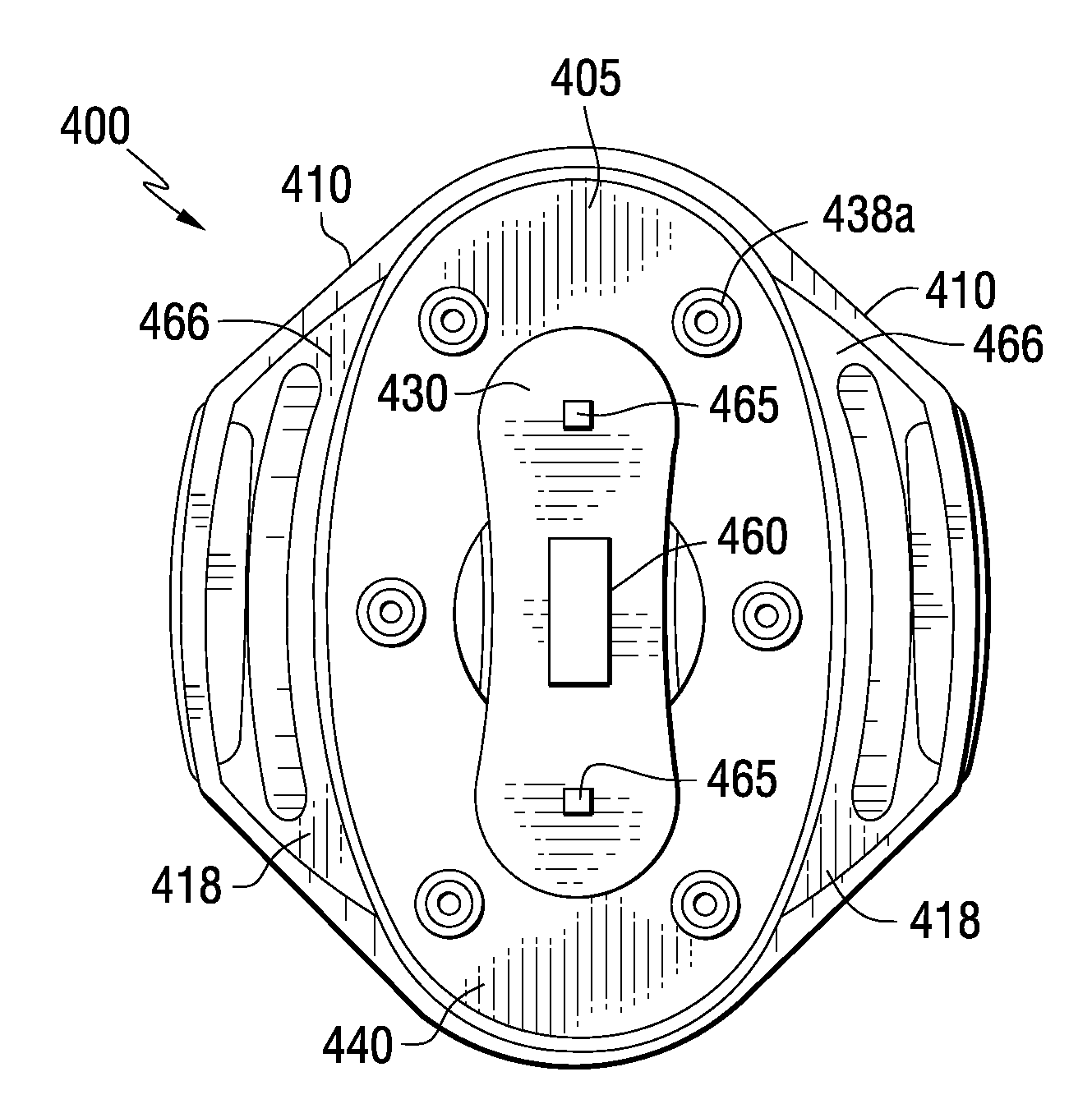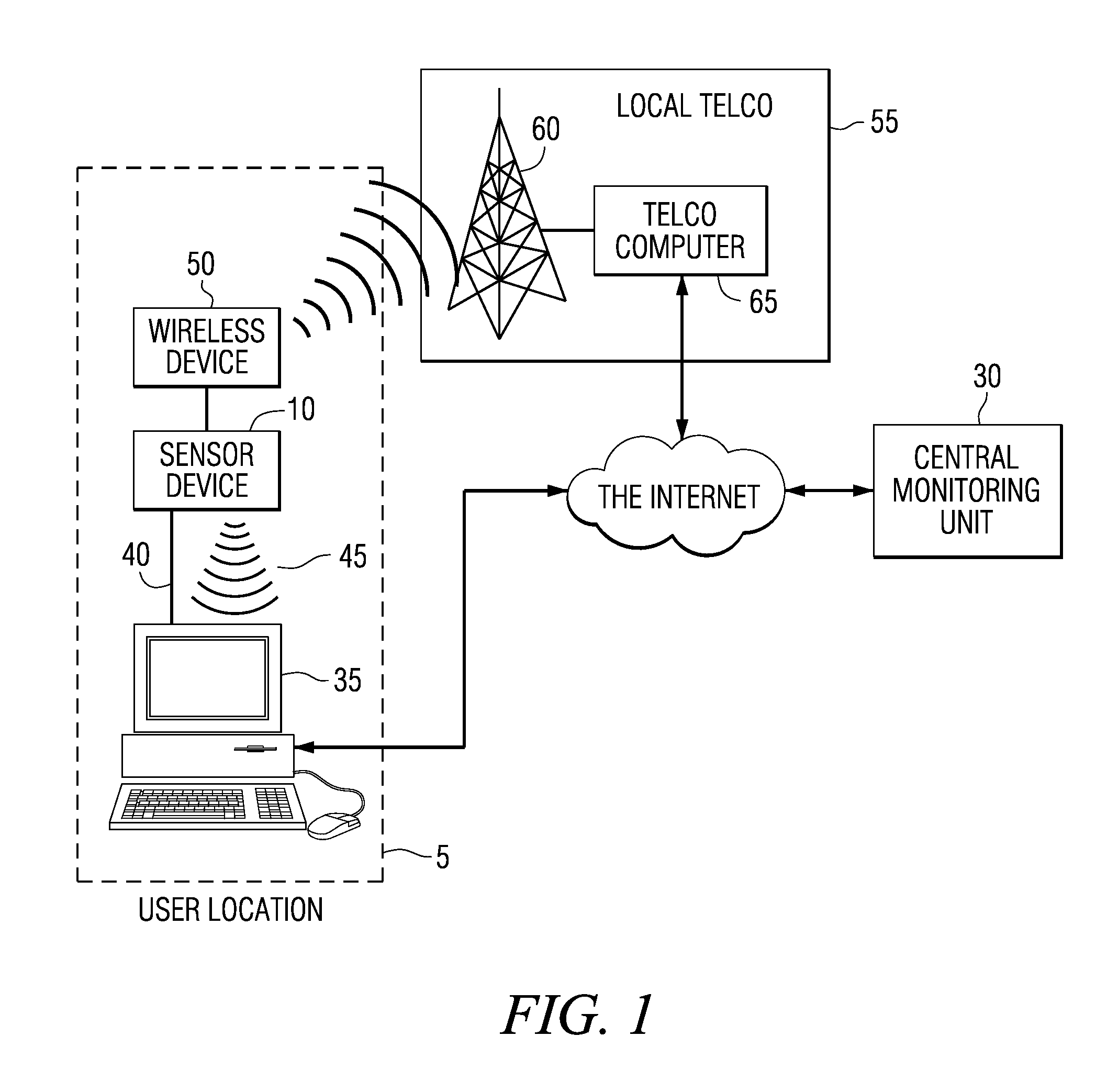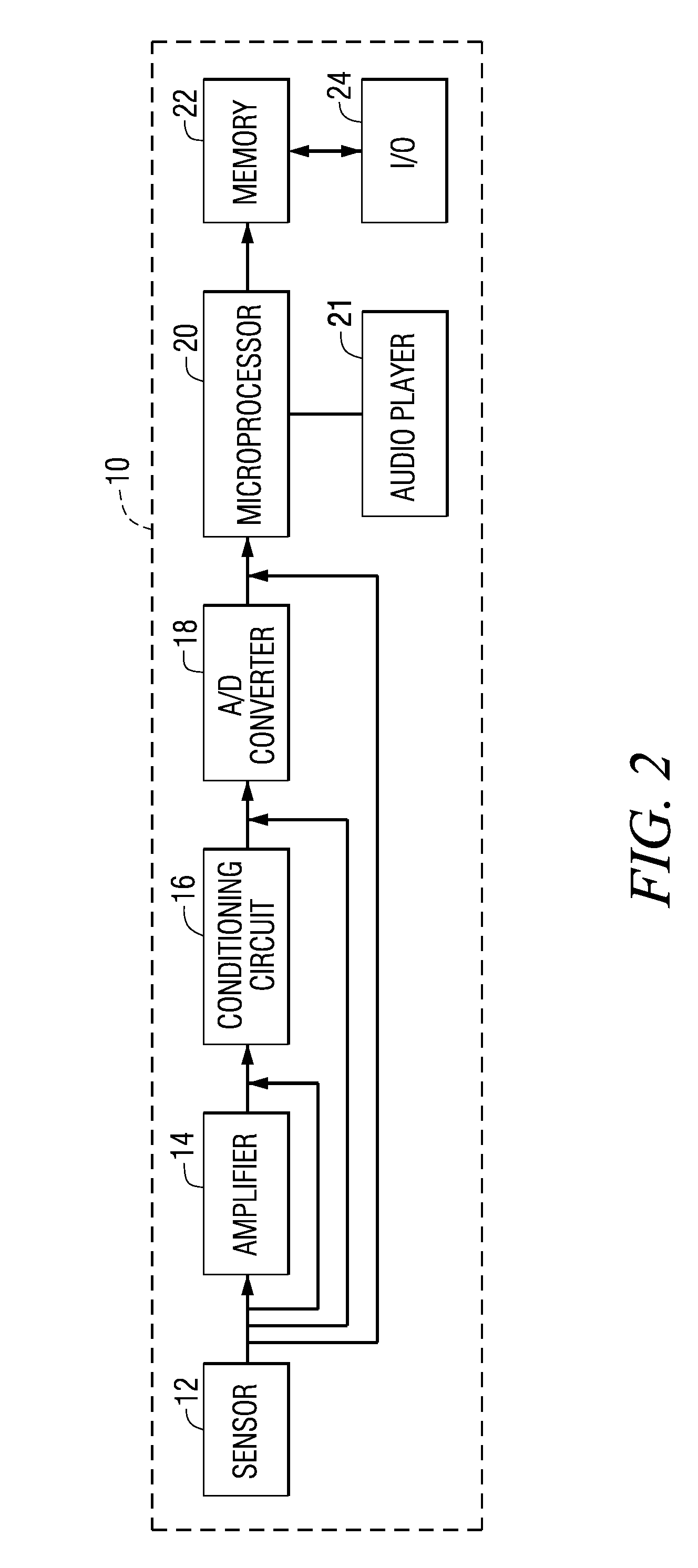Method and apparatus for determining critical care parameters
a critical care and parameter technology, applied in the field of physiological measuring systems, can solve the problems of limiting medical personnel to use crude blood measurements, warfighter shock mortality is higher, and 90% of warfighter deaths occur
- Summary
- Abstract
- Description
- Claims
- Application Information
AI Technical Summary
Benefits of technology
Problems solved by technology
Method used
Image
Examples
example 1
[0287]The following data as shown in FIGS. 40A-40H illustrates how the severity of LBNP (Lower Body Negative Pressure, described above) protocol (or exercise protocol) affect armband sensor values. For each plot, the X-axis represents severity stage: Stage 0 is a baseline stage, and the rest of the stages increase gradually in severity. The Y-axis in these graphs represents the units of the particular sensor mentioned in the graph. (For example, in the first graph of COVER (ambient temperature), the unit is in Celsius).
[0288]Each point in the graph is an average of all minutes under that particular stage averaged across all subjects (There are total 28 subjects who underwent the LBNP protocol, and there are total 14 subjects who participated in the exercise protocol). FIG. 40A is a measurement of ambiant temperature (COVER); FIG. 40B is a measure of galvanic skin response (GSR); FIG. 40C is a measure of heat flux (HF); FIG. 40D is a measure of heart rate (HR); FIG. 40E is a measure ...
example 2
[0289]The following data as illustrated in FIGS. 41A and 41B represents typical characteristics of the armband signals for the LBNP protocol. Each grid consists of 6 columns; each column representing an armband signal (From left to right—HR (Heart Rate), ECGMAD (Mean Absolute Difference of Raw ECG signal collected by the armband), HF (Heat Flux), SKIN Temperature; HR (Heart Rate Variability); and GSR (Galvanic Skin Response). Each row of the grid represents a particular subject. The first row has all the graphs for subject 180, the second row has all graphs for subject 181 and so on. The X-axis in each graph represents duration of the protocol which is roughly 40 minutes (each stage is roughly 5 minutes long, and the subject on average proceeds to stage 6—resulting in 30 min. on X axis+5 min. of baseline level+5 min. of recovery). The Y-axis is represents values of a corresponding unit of the armband variable in question (for example for SKIN—Y axis represents Celsius).
example 3
[0290]The classifier that detects hemorrhagic shock is designed in two levels. The first level distinguishes between LBNP and exercise. Once this distinction is made, the second level of classifier decides the severity of LBNP. Detecting a severe LBNP level is analogous to detecting a hemorrhagic shock.
[0291]For the first level of classifier: Energy expenditure, heart rate and GSR go up gradually in both the LBNP and exercise protocol as there is an increase in severity. However, accelerometer values behave differently for both the protocols. Even for supine and other low movement related exercises such as supine biking, on increased amount of motion is observed in the accelerometer variables, whereas during LBNP, the accelerometer variables remain static throughout the entire duration. This indicates a clear indication that EE, GSR, etc. are increasing despite a lack of motion.
[0292]Tables 6 and 7 illustrate the results of the classifier. These tables represent confusion matrices a...
PUM
 Login to View More
Login to View More Abstract
Description
Claims
Application Information
 Login to View More
Login to View More - R&D
- Intellectual Property
- Life Sciences
- Materials
- Tech Scout
- Unparalleled Data Quality
- Higher Quality Content
- 60% Fewer Hallucinations
Browse by: Latest US Patents, China's latest patents, Technical Efficacy Thesaurus, Application Domain, Technology Topic, Popular Technical Reports.
© 2025 PatSnap. All rights reserved.Legal|Privacy policy|Modern Slavery Act Transparency Statement|Sitemap|About US| Contact US: help@patsnap.com



